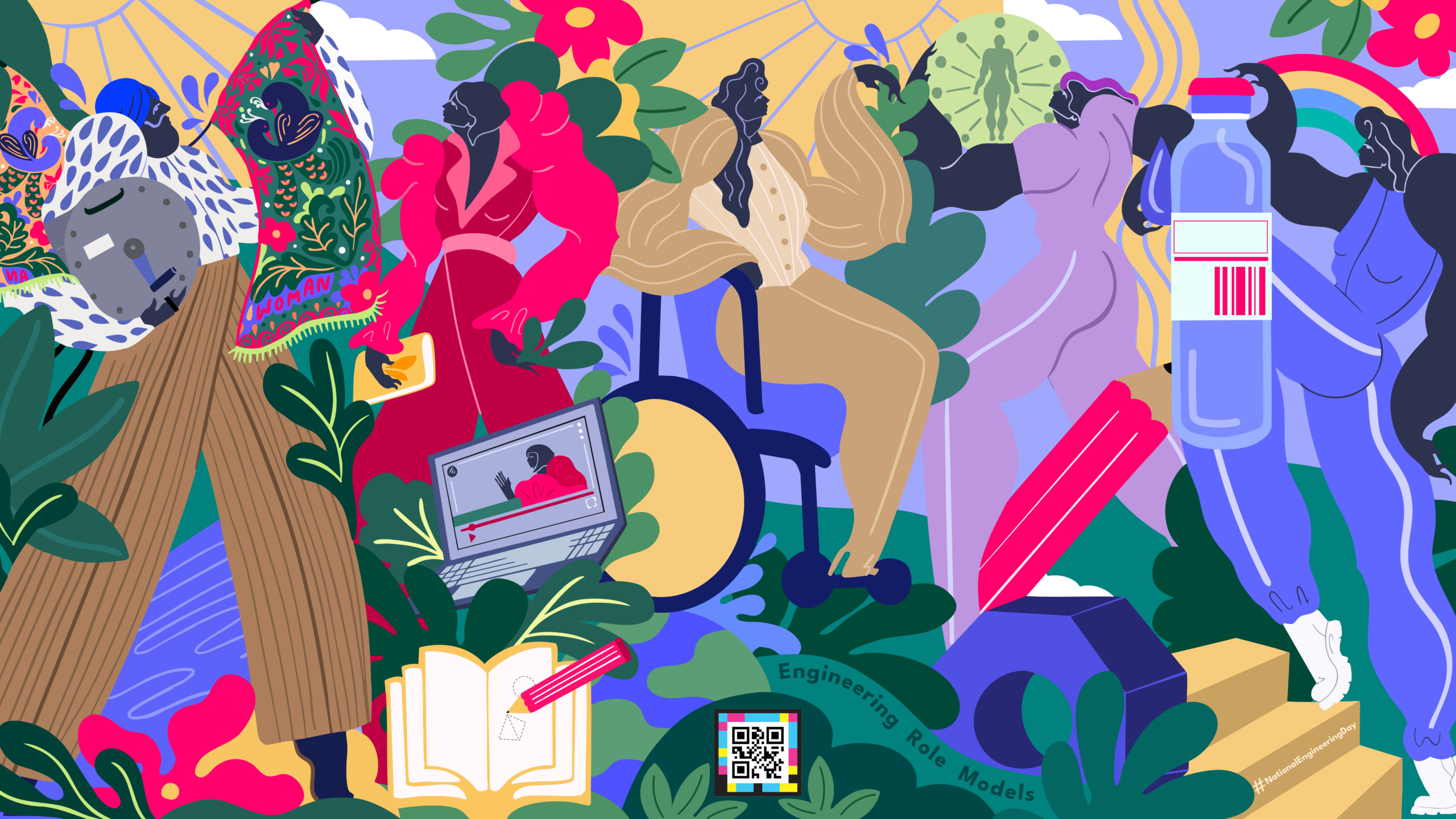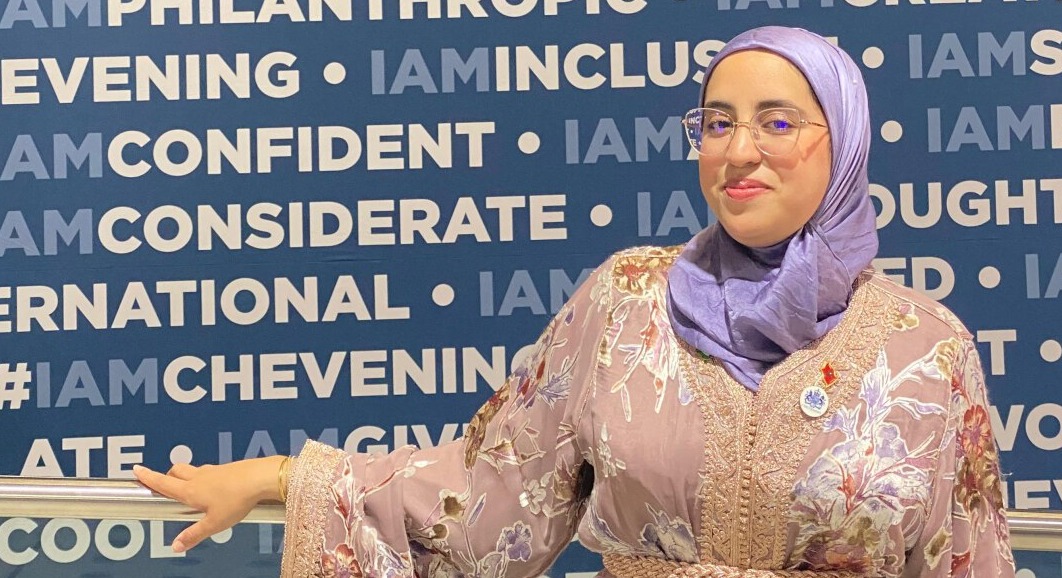We need a million engineers who understand accessibility
13/11/2024

…and we are, mostly, starting from zero.
This arresting, attention-grabbing line was said to me only last month, in a busy London canteen. Who said it, where we were, are and what they said – is it a million engineers, really? – will be front of everyone’s minds, and the key questions are:
Is this person worth listening to? Should I pay attention to them?
The truth is that it doesn’t really matter who said it, because, whether it’s your grandmother; a curious 7-year-old at a show and tell at school; or an engineering professor giving a prestigious keynote on accessibility engineering, a million is a million. It’s a lot of engineers. And achieving accessibility is both at our fingertips and, perhaps surprisingly, far from fulfilling its potential.
I believe that engineering, and the engineering mindset can help us bridge the gap.
Let’s broaden the way we think about engineering. If we build on the high visibility, inspiring initiatives we’re leading, such as our Net Zero and sustainability projects, or the development of our Hydrogen eco-system, what sits alongside our academic endeavours and industry partnerships is public engagement. These efforts connect people of all ages, impact policy, and make a genuine difference to our everyday lives. Let’s complement this with a start-up, low-cost mindset, such as the ‘might work’, entrepreneurial projects we support through our partnership with Green Future Investments Ltd (GFIL). Despite speaking many different ‘languages’, these collaborations bridge the gap; we find a common understanding through making these connections, and the tools in our hand make us all engineers.
Whenever you pick up your phone and turn on Closed Captions (Teams, Zoom or Googlemeet), or use Google Translate or Microsoft Speaker Coach in your laptop presentation, you are engineering for accessibility. You are making it easier for someone to understand and use your message. You are an engineer, identifying people’s needs and developing a solution. When you put it like this, you start to see how a million engineers is more achievable than we might first think, especially when you consider the number of people on the planet, the languages spoken, and how we can all be a daily engineer.
If everyone did a little bit more, together, the burden would shift from one to many
According to Teach Access*, only 3% of companies report that the majority of their staff, designers and developers have the required accessibility skills, and only 2% of respondents reported that it’s easy for their organisation to find candidates with accessibility skills. Working to bridge this accessibility skills gap between education and industry is a huge task. For Teach Access it translates to a mission of reaching a million students by 2030. We must all do what we can and, for me, that call-to-action came in 2020 when I became the mentor for a profoundly deaf and award-winning student over a multi-year period during the pandemic. Seeing the world through their lens, the challenges were material, easily fixable and yet no-one seemed to see the benefits of implementing technology to effect these changes. It was left to the engineer to devise their own solutions. A necessary step, but not a sufficient one. If everyone did a little bit more, together, the burden would shift from one to many.
I’ve visited Google’s Accessibility Discovery Centre, with leading UK next-generation engineers where we gained hands-on experience of technology innovations, from hearing, to sight, to neurodiversity and haptics (touch control), and much more.
One impact project already delivered this summer is a Google-hosted hackathon as part of the Engineers for Deaf Awareness Project (E-DAP). Results have been promoted by the Engineering Professors Council under an inclusive engineering banner: Building a Future of Inclusion – Deaf Awareness in Engineering with webinars and extended hackathons in the pipeline. E-DAP’s approach builds on a unique peer-to-peer leadership programme, leveraging emerging engineers’ creativity to push the boundaries of what accessibility can look like. These prototypes, proof of concepts, and ideas can be developed further or used as teaching case studies, enabling next-generation engineers to create and learn from real-world examples. This proactive approach integrates technology and engineering solutions to directly tackle the challenges faced by the deaf community in work and academic environments. It also breaks down traditional project hierarchies, empowering everyone to contribute.
As we look to the immediate future and beyond, it’s vital that we corral accessibility focused objectives into the broader scope of promoting STEM careers, contextualising and embedding the importance of bridging the skills gap and the potential impact on people, planet and prosperity. Engineers 2030: redefining the engineer of the 21st century, the most recent report from The Royal Academy of Engineers speaks directly to this need. As a Royal Academy of Engineering Visiting Professor at Cranfield University, part of a community of the brightest minds drawn from around the globe, I consider myself have lucky to have the opportunity to weave accessibility into my teaching.
The benefits of deaf awareness are significant – it enables us to hear the thoughts and ideas of those that may normally be excluded.
My team focuses on implementing the principles of deaf awareness and we have first-hand experience of how implementing app based technology, closed captions and thinking of clarity helps all global users of English communicate better with each other. The benefits of deaf awareness are significant – it enables us to hear the thoughts and ideas of those that may normally be excluded. It is an innovative approach and provides strategic benefits, particularly when deployed with a broad reach. For many it is the difference between inclusion or exclusion and it has clear potential to support Cranfield’s global community.
Our goal is to make deaf awareness a core standard in engineering, across academia and industry. By creating sustainable pathways for accessibility and making it an integral part of daily work and academic life, rather than a focus of EDI efforts, engineers can help to ensure deaf inclusion is integral to engineering processes, avoiding approaches to diversity and inclusion based on describing the differences. Where deaf awareness is implemented, communication improves for all, and accessibility is seen as something that we can all participate in.
Change is made, one person at a time. I’m proud to say that deaf awareness has become increasingly central to who I am as an engineer – I champion it, act as an ally and I hate to see engineering talent go to waste. And Cranfield is providing a place where I can make this difference.
Thank you to Christopher Patnoe, Google’s EMEA Head of Accessibility and Disability Inclusion, for the title of this talk, sustained support of our deaf awareness hackathons and more, and enabling change, at scale, through Google’s Accessibility Discovery Centre.
This blog has been published on National Engineering Day 2024. Standing alongside a community of Cranfield engineers, Dr Emma Taylor exemplifies this year’s theme of ‘engineering role models’ working to make a difference and inspire the next generation.
The vibrant artwork featured is by Kelly Anna. Commissioned by the Royal Academy of Engineering, it features five inspiring engineers, each represented with symbolic elements that highlight their unique contributions to society. From innovative inventions and STEM education to environmental sustainability and vaccine production, each figure stands amidst colourful, nature-inspired motifs that underscore their commitment to creating a better, more inclusive world through engineering.
Each of these role models brings unique contributions and diverse backgrounds to their fields, and all were nominated by the public from a total of over 150 nominations. Looking from left to right, you can see:
- Navjot ‘Nav’ Sawhney is depicted holding his flat pack washing machine, symbolising water conservation and empowerment for women in underserved communities.
- Dr Shini Somara is with her books and a computer, representing her work in STEM education and simplifying complex ideas.
- Meg Ginsberg takes centre stage in her wheelchair, holding water droplets to highlight her focus on wastewater management and accessibility in engineering.
- Laura Hoang holds a shield, symbolizing her commitment to safe, user-friendly design and her work toward a Net Zero future.
- And on the far-right hand side, Alice Kan is framed by a rainbow and holding a vaccine vial, reflecting her pivotal role in COVID-19 vaccine production and her push for inclusivity in engineering.
*Read the full report: Accessible Technology Skills Gap
Categories & Tags:
Leave a comment on this post:
You might also like…
Screening for FTSE 100 companies on Bloomberg
So you’re researching an index and need some data on its constituent companies? Bloomberg’s Equity Screening tool makes light work of this, not just for the FTSE, but for indices, exchanges and sectors worldwide. Type EQS ...
Accelerating my future: How Cranfield put me on the fast track to automotive safety innovation
Hello! I’m Michaela Kaiser, and I’m thrilled to share my journey studying abroad. I’m from Calgary, Canada, and I recently graduated from Cranfield’s MSc Automotive Engineering course. My path to Cranfield ...
From Myanmar to Cranfield: My path to Renewable Energy
As someone who is passionate about sustainability, my career goal is to build a path in the renewable energy sector. My aspirations comes from the benefits of developing sustainable energy sources and ensuring energy ...
From lifelong dream to circular economy leader: Q&A with Himesha Randeni on the Environmental Management for Business MSc
What does it take to turn a lifelong passion for the planet into a fulfilling and impactful career? For Himesha Randeni, the answer was the Environmental Management for Business MSc at ...
Library services over the Christmas period
Kings Norton Library will be open 24/7 throughout the holiday period as a study space. Library staff will work until 6pm on Friday 19 December and will resume their normal working hours from 9am on ...
From the control tower to Cranfield: My journey to shaping the future of airports
Hi, I’m Karima Lakouz, and this is the new me! I’m a Moroccan full-time student, aiming to graduate in 2026 with an MSc in Airport Planning and Management from Cranfield University. ...






